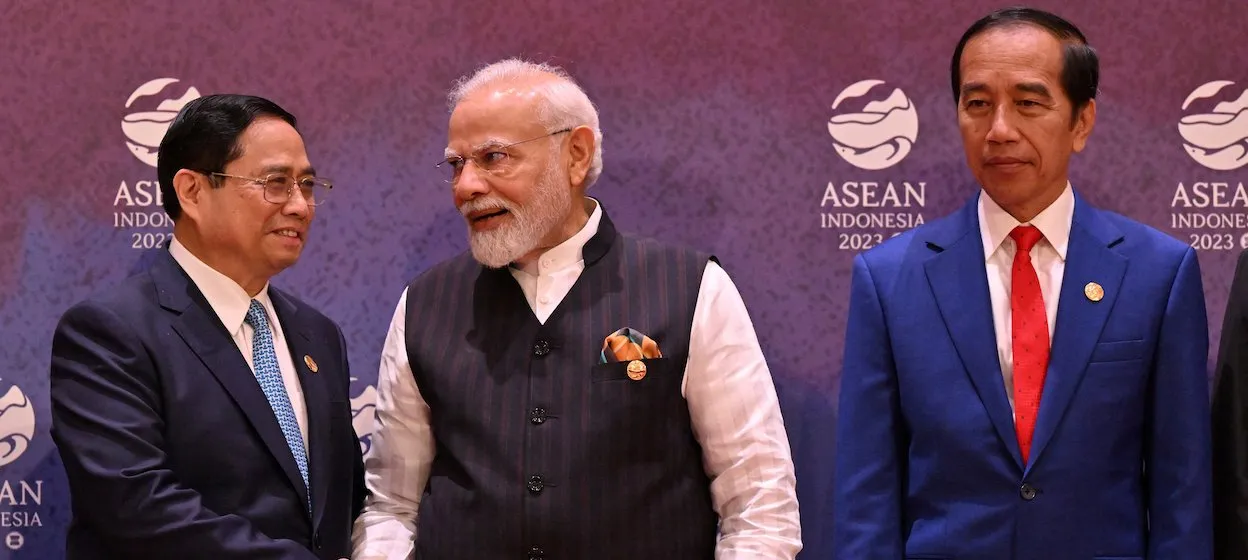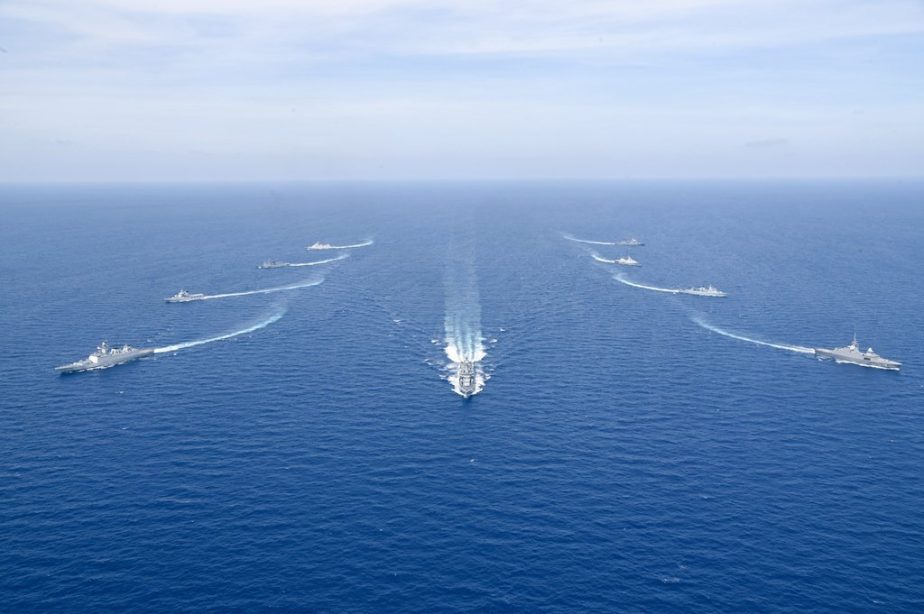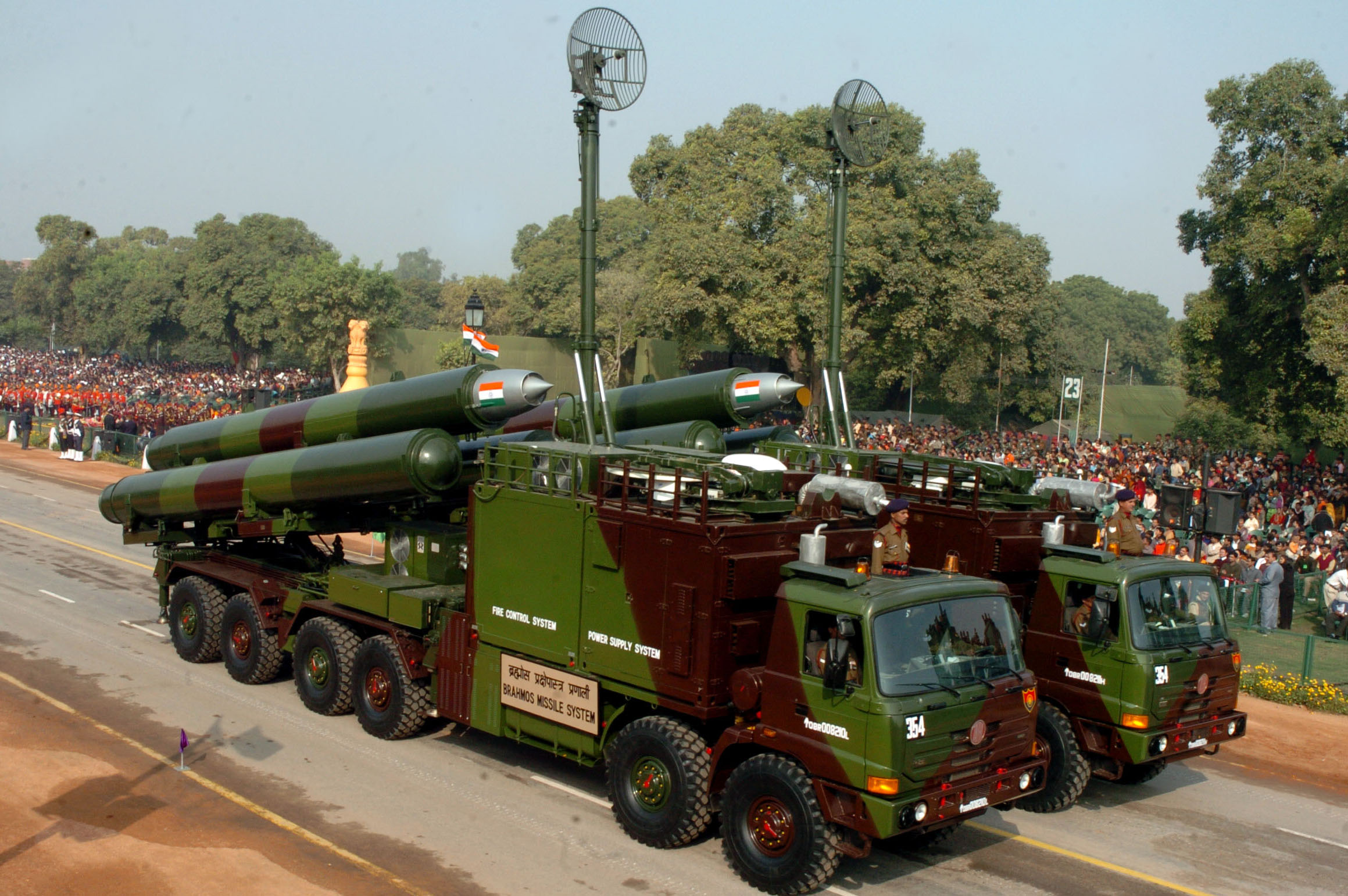India’s Expanding Global Influence Has Limited Reach in ASEAN
FULCRUM
APLN member Hoang Thi Ha co-wrote an article with Eugene Tan, arguing that India is seizing strategic opportunities to emerge as a new global power, but its influence in Southeast Asia has not yet been strongly perceived. Read the original article here.
India has been riding the crest of a global diplomatic wave in recent months, as Prime Minister Narendra Modi shifted gears from attending the BRICS summit in Johannesburg and the ASEAN-India summit in Jakarta to hosting the G20 summit in New Delhi. The problem, however, is that Southeast Asians remain sceptical of New Delhi’s approach to furthering its engagement with the region.
India has steadily gained global prominence with its growing economy, demographic strength and strategic importance. Despite India’s reserved stance on Russia’s war against Ukraine, its ties with Western powers, particularly the U.S. and other Quad members, continue to strengthen. Simultaneously, India is actively posturing itself as the voice of the Global South, with a unique position bridging the East-West and North-South divides. In a time of geopolitical upheaval, India sees strategic opportunities to become a new centre of power that extends its influence in multiple directions.
But to Southeast Asians, India’s global reach is not yet keenly felt despite Modi’s refrain to make ASEAN a “central pillar of India’s Act East Policy”. India’s economic and political-strategic influence, according to the 2023 State of Southeast Asia Survey, was ranked the lowest among ASEAN’s dialogue partners. Recent diplomatic accolades that India has achieved with ASEAN, including the elevation of ASEAN-India relations to a Comprehensive Strategic Partnership and the agreement to promote synergies between the ASEAN Outlook on the Indo-Pacific and India’s Indo-Pacific Oceans Initiative, appear to hold more significance in form than in substance.
India’s lagging influence in Southeast Asia is closely associated with its limited economic engagement and protectionist policies towards the region. India’s share of ASEAN’s total trade has stagnated between 2-3 per cent in the last decade. In contrast, China’s (excluding Hong Kong) share of ASEAN’s total exports and imports between 2012 and 2021 increased from 11.4 per cent to 16.4 per cent and from 14.4 per cent to 23.9 per cent respectively. Amongst ASEAN-plus FTAs, the ASEAN-India Trade in Goods Agreement (AITIGA) has the lowest level of trade liberalisation and the most restrictive rules of origin requirements.
Further, ASEAN’s omni-directional trade liberalisation appears to be more an irritant than an attraction to India. New Delhi is concerned that this will allow for the circumvention of goods from third countries (especially China) to the Indian market, hence its introduction of strict FTA rules of origin requirements in 2020. As ASEAN continues to bet its future on deepening global supply chains (GVC) integration with China through the Regional Comprehensive Economic Partnership, India appears determined to keep its distance from China-centric GVC and trade networks.
It … comes as no surprise that Southeast Asians have expressed the least confidence in India’s ability to lead the global free trade agenda. What is intriguing is their similarly low confidence in India’s capacity to advocate for the rules-based order and international law
ASEAN-India trade has slightly picked up in recent years to reach US$131 billion in 2023, with India running a US$43 billion deficit, which has fuelled its concerns over trade imbalances. Indian Commerce Minister Piyush Goyal has described AITIGA as the most “ill-conceived” FTA that is “unfair to the Indian industry”. Indian media and officials primarily frame the review of AITIGA as necessary to address the “asymmetry in trade relations”.
India’s trade deficits should be assessed in its overall economic structure and external economic engagement. As India expands its trade globally, the increase in its imports has outpaced the growth in its exports, not just with ASEAN, but also with other FTA partners, such as Japan and South Korea. This sheds light on a more profound issue — India’s underdeveloped manufacturing sector and low integration with East Asian GVC. India runs high deficits with ASEAN countries that have robust manufacturing sectors, including Singapore, Vietnam, Thailand and Malaysia. Rather than attributing the trade imbalances to unfair trade practices, New Delhi should rethink its trade policy towards broadening its manufacturing base and increasing its GVC participation.
This is ever pertinent if India is serious about taking advantage of the accelerating GVC relocation from China to become a global manufacturing hub in its own right. Indian leaders nowadays advocate “decentralised globalisation” and “re-globalisation” with a view to making India one of “multiple centres of production”. With Southeast Asia also a preferred destination of the GVC diversification, there is significant potential for India-ASEAN GVC linkages to grow. In the words of Indian Foreign Minister S. Jaishankar, “better-connected India and ASEAN would be well-positioned to promote decentralised globalisation and resilient and reliable supply chains”.
However, Jaishankar’s words ring hollow in light of India’s entrenched protectionism. New Delhi has been riding upon a global resurgence of mercantilism by placing its trade deficits with ASEAN under scrutiny. Contrary to Modi’s rhetoric to ASEAN leaders on “elevating Global South for the common interest of all”, India opposed ASEAN’s inclusion in a policy initiative between India, Japan and Australia to boost their supply chain resilience including through closer interconnectedness of their businesses. While citing ASEAN-China links as the reason, New Delhi could well view ASEAN countries more as rivals than partners as it seeks to capitalise on economic opportunities arising from GVC restructuring. The “Make in India” vision is laudable, but it does not make economic sense for India to domesticate entire supply chains.
It hence comes as no surprise that Southeast Asians have expressed the least confidence in India’s ability to lead the global free trade agenda. What is intriguing is their similarly low confidence in India’s capacity to advocate for the rules-based order and international law. This underscores the broader challenge India faces in Southeast Asia, where its real and perceived influence remains relatively stagnant, trailing behind its ascendant global stature. A paradigm shift from the narrow preoccupation with trade imbalances with ASEAN is required by India so that both sides can unleash their economic potential and add ballast to their comprehensive strategic partnership.
Image: India’s Prime Minister Narendra Modi (C) greets Vietnam’s Prime Minister Pham Minh Chinh (L) as Indonesia’s President Joko Widodo (R) looks on prior to a photo session during the 20th ASEAN-India Summit as part of the 43rd ASEAN summit in Jakarta on September 7, 2023. (Photo by Adek BERRY / POOL / AFP)




